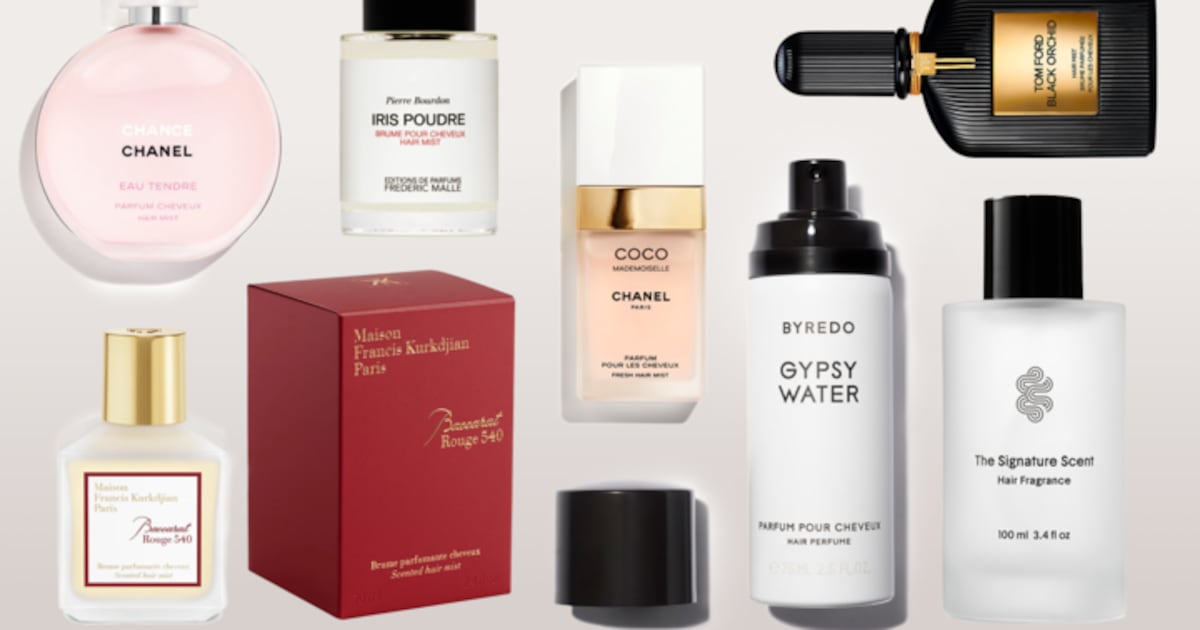Funmi Fetto remembers when she first encountered a bottle of hair perfume, 10 years ago. She was the acting beauty director at British Vogue, and thought it was ridiculous: âWho on earth needs hair perfume?â
Plenty of people, it turns out. Hair perfume is one of the fastest growing categories in the $60 billion global fragrance industry, thanks to a perfect storm of the post-pandemic fragrance boom, a vogue for scalp-friendly formulations and relative affordability (hair perfume tends to cost a fraction of more concentrated eau de parfums). Even Fetto has come around â sheâs partial to Maison Francis Kurkdjianâs Baccarat Rouge 540 hair mist, which according to the brand âdelicately perfumes the hair while leaving it soft.â
âItâs pretty straightforward â we want our hair to smell nice,â Fetto said. âNot in an off-the-shelf-shampoo kind of way, but in a way thatâs elevated and sophisticated.â
The category is âexploding,â said DSM-Firmenich perfumer Nicole Mancini. Since the pandemic, search volume for hair perfume has more than doubled worldwide, according to Google Trends.
Hair and fragrance are the two categories driving the prestige beauty market in the US, which grew 8 percent this year, according to Circana. Haircare brands like Oribe have long used scent to elevate their collections, and position their hair perfumes as luxury products. Meanwhile, upscale perfume houses, from Kurkdjian to Chanel, have distilled some of their bestsellers into less concentrated âhair mists,â often for a fraction of the original price.
Hair fragrances, like candles or bath products, provide opportunities to expand âthe fragrance ritual,â says Connor Spicer, a consultant at Euromonitor, noting particular demand for hair fragrance in the US, UK, and UAE. But while it can be chemically challenging to translate a scent from a perfume into a candle or bath product, modifying a perfume for hair is relatively simple, Mancini said, and a matter of turning down the fragrance concentration and alcohol content.
The hair care categoryâs recent fixation on scalp health â the âskinificationâ of hair â is also contributing to their popularity. Many formulas tamper down their alcohol content âso that hair or scalp donât experience over-drying or irritation when applied,â said Spicer. Some savvy marketers may also add ingredients that can promise benefits like UV protection, conditioning, or added shine.
Good Smells Ahead
Humans have fragranced their heads for centuries â the ancient Romans traded a honeysuckle oil specifically as a hair scent â but have only recently decided to bottle and sell unique formulations specifically for this use-case. In 1955, Parfums Christian Dior launched la Siphonette, a tiny brush intended to scent votre coiffeur when dipped into a small vial of Miss Dior. Dior was also the first fragrance house to remix a best-selling perfume for the hair, with the 1999 launch of JâAdore hair perfume.
The category of hair perfume as we know it is a byproduct of the 2000s fragrance boom, as celebrities flocked to the licensing gold rush and designers began âflankingâ best-selling scents with various new permutations. Chanel came out with Coco Mademoiselle Hair Mist in 2003. Tom Fordâs first fragrance with Estée Lauder, called Black Orchid, was mixed into a Luminous Hair Perfume in 2008, and the next year, Byredo launched a collection of its best-sellers reimagined as hair-friendly formulas. By 2010, the New York Times reported that hair scents âmay be the next fragrance frontier.â
The post-pandemic period saw another fragrance boom driven by prestige and âsuper luxuryâ fragrances in the Byredo tier, according to Larissa Jensen, a beauty analyst at Circana. Consumers are also forgoing signature scents for a wardrobe of them that can be worn according to their whims â a phenomenon propelled by fragrance-obsessed Gen-Z, who are hoarding scents and layering them like accessories.
âFragrance is one of the most important parts of getting somebody excited about using hair care products,â said Dianna Cohen, who founded the hair care brand Crown Affair in 2019.
Cohenâs fragrance of choice used to be Byredo Gypsy Water ($225 for the eau de parfum). She bought the hair perfume ($85) as a way to refresh her scent throughout the day. Before she began designing and fundraising her own line, Cohen contacted a fragrance house, hoping to cook up an aroma that evoked âa little bit of funk, a little bit of Zen.â
The resulting Signature Scent imbues every Crown Affair product, and launched as a hair perfume in October 2022. It costs $85, the same price as Byredoâs or Kurkdjianâs but twice as much as a dry shampoo or finishing spray.
âOur core customer bought it up right away,â Cohen said.
For shoppers unfamiliar with the scent, it was a harder direct-to-consumer sell. But an Allure Best of Beauty Award and a few viral TikToks have been convincing; this quarter, sales of the Signature Scent nearly doubled.
A decade-plus later, this destiny appears to have manifested. Cohen said fragrance is a priority for Sephora, one of Crown Affairâs retailers, and a place where the selling power of a good scent cannot be overstated. âEvery year, like clockwork, Sephora is like, letâs put the hair fragrance on top,â Cohen said. âAnd it sells through.â
On Saturday, the brand launched a Signature Scent candle in partnership with Nette at Sephora, and intends to expand its fragrance range. The whole point is to âelevate the conversation around the [hair] category.â said Cohen. âItâs great from a business perspective.â
Sign up to The Business of Beauty newsletter, your complimentary, must-read source for the dayâs most important beauty and wellness news and analysis.

